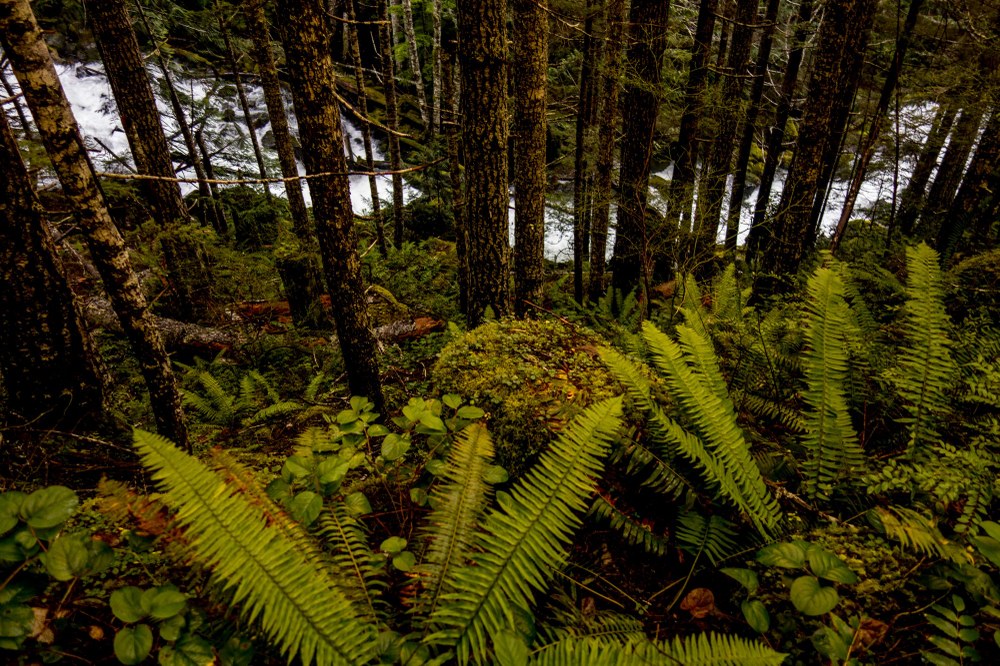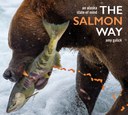
Last year, we asked you to take action against a proposal to exempt the Tongass National Forest in Alaska from the Roadless Rule. The Roadless Rule is an important conservation tool that protects many of our most valued backcountry landscapes from logging, road building, and other development. Unfortunately, the Administration recently announced plans to remove protections from the Tongass rainforest and open it to development.
The Tongass is the largest intact temperate rainforest in the world. It’s old-growth forests support Tribal communities and millions of wild salmon, host incredible outdoor recreation opportunities like mountaineering and sea kayaking, and capture a tremendous amount of carbon. Not only are we concerned about the future of the Tongass, but the decision would set a terrible precedent for areas protected by the Roadless Rule in Washington state.
We need you to speak up to protect the Tongass and wild backcountry areas in our backyard. Take action now, and read on to learn more about the Roadless Rule and what’s at stake.
What is the Roadless Rule?
The Roadless Rule is a critical - though lesser-known - tool that protects wild landscapes in our National Forests. It was established in 2001 after enormous public outreach, and provides protection for 60 million acres of roadless areas on our national forests and grasslands. While these areas are protected from development, the protections are less restrictive than Wilderness and allow a greater range of recreation activities. These remote, un-developed landscapes are treasured by our community for the backcountry recreation experiences they provide.
Chances are, you’ve recreated in a Roadless area. In Washington, prized climbing and backcountry skiing areas like Washington Pass and Liberty Bell, hiking trails near Mount Baker and Baker Lake, and scrambling destinations in the Teanaway and Entiat Mountains are protected by the Roadless Rule. We are concerned that exempting the Tongass from the Roadless Rule will pave the way for similar action on other Roadless areas like these. A threat to the Roadless Rule in one corner of our national public lands is a threat to all of our Roadless areas, including the ones you’re most connected to.
What’s at Stake with the Tongass?
The Forest Service released a draft plan that proposes to strip Roadless protections from more than 9 million acres of old-growth forest in the Tongass National Forest in Southeast Alaska. This proposal began in 2018, when Alaska petitioned the Forest Service for an exemption from the Roadless Rule. Though thousands of Americans, including hundreds in our community, asked the Forest Service to maintain protections for the Tongass, the Administration announced last week that it would roll back protections on the forest.
Without Roadless protections, the Tongass could be opened up to logging, road building, and other intensive development. These changes could permanently alter the Tongass National Forest and cause ripple effects for our global climate, Native communities, and salmon. The Tongass contains nearly a third of all that remains of the world’s rare old-growth temperate rainforest. The ancient trees in the Tongass are champions of combating climate change, storing 8% of the carbon captured on National Forest lands in the country. Logging in the Tongass risks releasing centuries worth of greenhouse gas emissions into the atmosphere.
In her book Salmon in the Trees: Life in Alaska's Tongass Rain Forest, Braided River author Amy Gulick describes the Tongass as one of the rarest ecosystems on Earth. “The Tongass is a place where salmon, trees, bears, eagles, and people are all connected in a glorious cycle of life that has thrived for millennia,” writes Gulick. The Native communities of the Tlingit, Haida, and Tsimshian see their relationship to the Tongass as the basis of their cultural survival. A tribal member interviewed by Gulick shares that “Subsistence hunting and fishing nourishes our body and spirits, and sharing the bounty of the land with our family and community reinforces our clan ties.”
What’s Next?
As outdoor enthusiasts, we know our community cares about both conservation and recreation, and the Roadless Rule is vitally important for both. There are two things we can do now, and we’ve made it easy to make your voice heard.
- The Forest Service just published its Final Environmental Impact Statement, and there’s a short public comment period for us to register our concerns about the roll backs. While this is unlikely to change the Administration’s decision, these comments build the administrative record, demonstrate public support for the Roadless Rule, and will make it easier to pass the Roadless Area Conservation Act.
- The Roadless Area Conservation Act (S. 1311/H.R. 2491) is a bill led by Washington state Senator Maria Cantwell and Congressman Gallego of Arizona to permanently protect the Roadless Rule, protecting backcountry roadless areas and taking us off the merry-go-round of single-state objections. Passing this bill would offer permanent protection for the 30% of National Forest lands that are currently protected under the 2001 Roadless Rule.
The tool below will let you send both a letter to the Forest Service and letters to your members of Congress asking them to support the Roadless Area Conservation Act. Personalizing what we've created is always advised - add a story about climbing in Washington Pass or use the interactive map from Outdoor Alliance to find other Roadless areas where you spend time.
We appreciate working with our partners at Outdoor Alliance on this issue.
Main image by nate brown.
Add a comment
Log in to add comments.Save the Tongass!! Once roads are able to encroach it will be the beginning of the end for these pristine area.
 The Mountaineers
The Mountaineers
